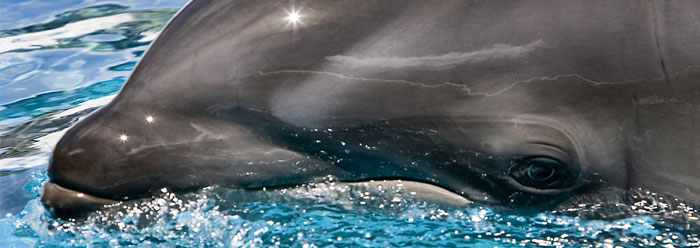Whales are graceful and remarkable swimming mammals. The 84 living species are amazingly diverse, ranging from over 100 feet long down to the size of an average dog. Recent research attempted to discover an evolutionary reason for this great diversity in body sizes, but the surprising findings actually support the creation model of whale development.
In their study published online in Proceedings of the Royal Society B,1 biologists tested whether the "explosive radiation hypothesis" matched well with molecular clock "data." They compared whale DNA sequences, and in "a collaboration between paleontologists and molecular biologists…[found] that very early in their history, whales went their separate ways from the standpoint of size, and probably ecology."2
The largest whales mostly eat plankton, medium-sized whales dine on squid, and small whales consume fish. The researchers found no signs in the DNA that these whale groups underwent size fluctuations after they had resolved into their current respective niches. Instead, if they all shared a single common whale ancestor, the different groups rapidly settled into their sizes and niches "by 25 million years ago at the latest," and "for many millions of years, they have not changed very much."2
The dates given in the study were not directly measured, since nobody was around to record whale beginnings, but were instead derived from the dates assigned to whale fossil-bearing rock layers as interpreted by paleontologists. Realistically, if whales changed size over time, it could have occurred recently rather than in the far distant past. And this makes even more sense given the researchers' other conclusion "that evolution in early whales was explosively fast."2 If variations occurred quickly, then vast ages are not necessary.
Even though various whale populations are well-settled into ecological roles, interbreeding between some of them is not unknown. For example, "wholphins" arise from the union of a bottlenose dolphin and a false killer whale.3 This indicates that at least these whale forms likely shared a common ancestor. Others probably did, too.
Variations in certain features, like body or snout length, can fluctuate within the still-interbreeding members of the whale kind. But this process cannot legitimately be extrapolated to explain the ultimate origin of the core features that define whales themselves, because in all of these cases, the bodies and snouts are already there and very well-formed.4
Discerning which modern species descended from an originally created form is no easy task. One clue is to examine breeding records and the presence or absence of novel, essential organs. For example, blue whales are not only larger than other whales, reaching weights of 180 metric tons, but they have baleen integrated with expandable skin attached to a specially shaped mouth. Only when all those components--which are very different from the mouth structures of other whales--are integrated simultaneously does the blue whale's method of screening the ocean for plankton function. So, this "all-or-nothing" apparatus indicates that blue whales probably do not share ancestry with those whales without it.
In other words, differences in some easy-to-alter features--like size or color--may change between generations, but this is due to well-designed internal capacities to adapt. In contrast, the invention of entire new organs or whole new creatures has only one reasonable explanation, which is creation.
Evolutionary frontman Richard Dawkins recognized this, although he insisted in 1996 on attributing the creative power to nature--despite the lack of any positive evidence supporting this conclusion. He wrote:
Evolution is very possibly not, in actual fact, always gradual. But it must be gradual when it is being used to explain the coming into existence of complicated, apparently designed objects, like eyes….Without gradualness in these cases, we are back to a miracle.5
According to the Proceedings of the Royal Society B study, the changes in whales were not gradual. But the whale changes did not occur in any core "complicated" features,6 and thus what is being termed "evolution" is actually either designed variation within a created kind, or pure imagination.
References
- Slater, G. J. et al. Diversity versus disparity and the radiation of modern cetaceans. Proceedings of the Royal Society B. Published online before print May 19, 2010.
- Wolpert, S. UCLA biologists report how whales have changed over 35 million years. University of California, Los Angeles press release, May 28, 2010.
- Batten, D. 2000. Ligers and wholphins? What next? Creation. 22 (34): 28-33.
- Sherwin, F. and B. Thomas. 2009. Do New Species Demonstrate Darwinism? Acts & Facts. 38 (2): 36.
- Dawkins, R. 1996. River Out of Eden. New York: Basic Books, 83.
- Brewer, G. J. 2001. The Imminent Death of Darwinism and the Rise of Intelligent Design. Acts & Facts. 30 (11).
Image credit: Mark Interrante
* Mr. Thomas is Science Writer at the Institute for Creation Research.
Article posted on June 11, 2010.




